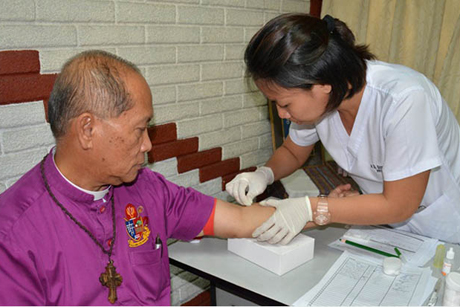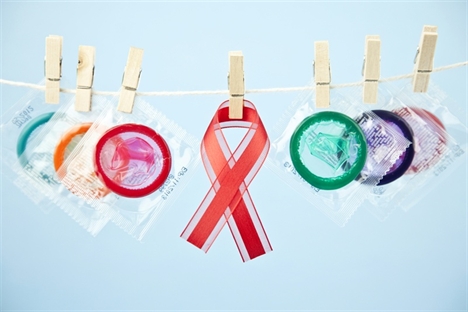
The charity sector is reacting to the news that the UK public has voted to leave the EU. Brendan Hill, chief executive of Concern, tweeted that “Brexit brings potentially huge implications for our sector”.
His view was echoed by the charity leaders’ network ACEVO, which is seeking an urgent summit with leading Brexiteers to establish how they propose to make good the loss of European funding to the sector.
ACEVO Chief Executive Asheem Singh recently wrote to leading Vote Leave exponents Michael Gove and Iain Duncan-Smith.
In his letter he sought assurances that any successful Brexit campaign would make good the loss of the £200m a year which the Charity Finance Group estimated to be the UK’s annual income from grants and contracts from Europe.
Singh said: “The British people have spoken and it is now mission critical that we come together to ensure a fair outcome for all. Without urgent reform, Brexit will prefigure concrete cuts tocommunity funding. It is time for immediate talks between third sector leaders and the Government to ensure this shortfall does not result in immediate and real harm, and to create a roadmap to reform of social protection legislation. We are ready to work with the Government and make this new dispensation work – but time is of the essence.”
Needed more than ever
Elsewhere, Sir Stuart Etherington, chief executive of the National Council for Voluntary Organisations, said in a blog post that the voluntary sector is needed more than ever to rebuild trust in society following the Brexit vote.
Addressing those who work in the sector, Etherington said: “Britain is facing political and economic unrest for months if not years to come. Your support and advocacy for the people and causes you work for will be essential in this climate.
“There are millions, even tens of millions in the UK who feel distanced from institutions that are meant to work on their behalf. At best apathetic, at worst, deeply hostile. Meanwhile the debate has left a bitter taste on both sides. It has served to exacerbate other divisions within our society.
Economic fall-out
The Museums Association’s director Sharon Heal warned the immediate economic fall-out of Britain leaving the EU could have consequences for the museum sector.
Heal said: “It remains to be seen what the impact of leaving the EU will be on culture and museums. There has been an immediate economic fall-out and that could have consequences for the sector.”
She called on UK museums to maintain and build upon their relationships with colleagues in Europe and elsewhere. “Museums could do a number of things whilst waiting for the dust to settle. It will be important to continue to work with our partners internationally – in Europe and further afield – we have much to learn from our colleagues globally and much to share,” said Heal.
“And we can foster conversations in our museums here. For example immigration was clearly a huge issue in the referendum and many people have questions doubts and fears on this subject. Museums are ideally placed to host these conversations with their local communities.”
Adapting and thriving
From a digital technology perspective, Julian David, CEO of techUK said work starts on today on ensuring the technology sector continues to thrive outside of the EU.
“Today the British public has decided that the UK should leave the European Union,” he said. “This is not the outcome that the majority of techUK members were hoping for. It opens up many uncertainties about the future. However, the UK tech sector will play its part in helping the UK to prepare, adapt and thrive in a future outside the European Union.
“Today, just as it was yesterday, the UK remains a great place to start, locate and grow a tech business. It is full of talented, skilled and passionate people with the ideas and creativity to make great things happen. Its consumers are eager and enthusiastic early adopters of new technology. Its world class universities are powerful engines of science and innovation and its politicians and regulators have a strong record of supporting market-led investment. We must now harness these assets like never before and build a world-beating ecosystem for tech that continues the great British tradition of inventing the future.
“Today, at techUK we start work with our members to map out this new future. There will be a long to-do list with many policy and regulatory issues requiring urgent action. Tech companies will need to come together and speak with one voice to ensure their needs are understood and acted upon. To succeed, the UK tech sector needs great people, great infrastructure, world-class science and research, unfettered access to global markets, and a world-class smart and predictable regulatory environment. Without the benefits of EU membership, the UK needs to be at its very best to succeed. That remains our purpose. To make the UK the best place in the world for tech.”
Innovative solutions
Alex Day, director of The Big Give, said: “I am sure the referendum result has been a shock to everyone regardless of which way they voted. It will be a case of ‘wait and see’ what the impacts are for the charity sector but I think most charities will be rightly concerned about any negative impacts to the UK economy brought about by the result. If today’s decision results in a slowing of the growth or even decline in the economy, we could face increased demand for charity services coupled with a decrease in the amount of funding, both statutory and voluntary, available to them. I believe many charities over the coming weeks will be considering their income streams and many may take the approach of ‘plan for the worst and hope for the best’.
“If the UK does enter a period of economic decline, charities and funders alike will need to look at innovative solutions to curb the effects of an economic downturn. For example, the Big Give has recently released research which demonstrates the effectiveness of match funding as a fundraising and funding tool; to both inspire donors to give and to ensure funders gain maximum leverage on their philanthropy. Even amidst the economic downturn, in 2010 our annual online match funding campaign, the Christmas Challenge still raised £9.3m for 323 charities. In any environment where demand for charity services increases and cuts occur, we would urge policy makers and funders to do all they can to protect the work of the sector. We would also encourage charities to take the opportunity to think innovatively to ensure they continue to deliver maximum impact to their beneficiaries.”
Thanks for reading, let us know what you think in the comments below, or you can find us on Facebook, Twitter or Instagram!





















